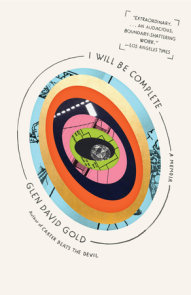
Sunnyside
By Glen David Gold
By Glen David Gold
By Glen David Gold
By Glen David Gold
By Glen David Gold
Read by Robertson Dean
By Glen David Gold
Read by Robertson Dean
Category: Literary Fiction | Historical Fiction | Women's Fiction
Category: Literary Fiction
Category: Literary Fiction | Audiobooks
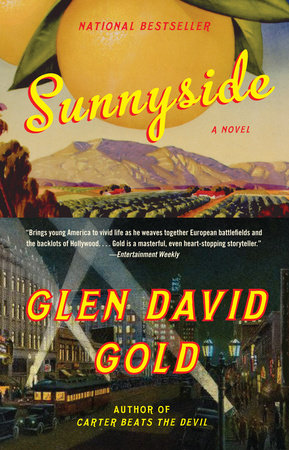
Buy from Other Retailers:

Buy from Other Retailers:
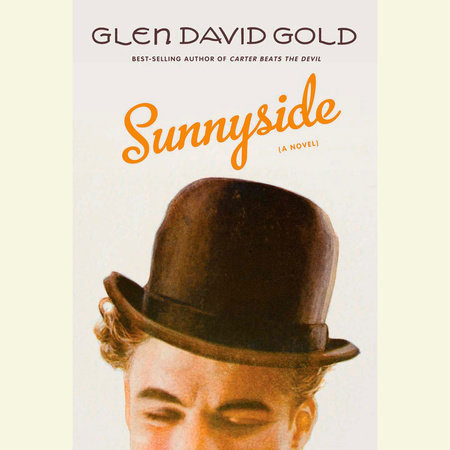
Buy from Other Retailers:
-
$17.95
May 04, 2010 | ISBN 9780307454980
Buy from Other Retailers:
-
May 05, 2009 | ISBN 9780307271945
Buy from Other Retailers:
-
May 05, 2009 | ISBN 9780739376386
1405 Minutes
Buy from Other Retailers:
Buy the Audiobook Download:
About Sunnyside
A quintessentially American epic, Sunnyside stars the one and only Little Tramp, Charlie Chaplin. It’s 1916 and, after an extraordinary mass delusion where Chaplin is spotted in more than eight hundred places simultaneously, his fame is at its peak but his inspiration is at a low. As he struggles to find a film project as worthy as himself, we are introduced to a dazzling cast of characters that take us from the battlefields of France to the Russian Revolution and from the budding glamour of Hollywood to madcap Wild West shows. The result is a spellbinding novel about dreams, ambition, and the birth of modern America.
About Sunnyside
A quintessentially American epic, Sunnyside stars the one and only Little Tramp, Charlie Chaplin. It’s 1916 and, after an extraordinary mass delusion where Chaplin is spotted in more than eight hundred places simultaneously, his fame is at its peak but his inspiration is at a low. As he struggles to find a film project as worthy as himself, we are introduced to a dazzling cast of characters that take us from the battlefields of France to the Russian Revolution and from the budding glamour of Hollywood to madcap Wild West shows. The result is a spellbinding novel about dreams, ambition, and the birth of modern America.
About Sunnyside
Glen David Gold, author of the best seller Carter Beats the Devil, now gives us a grand entertainment with the brilliantly realized figure of Charlie Chaplin at its center: a novel at once cinematic and intimate, heartrending and darkly comic, that captures the moment when American capitalism, a world at war, and the emerging mecca of Hollywood intersect to spawn an enduring culture of celebrity.
Sunnyside opens on a winter day in 1916 during which Charlie Chaplin is spotted in more than eight hundred places simultaneously, an extraordinary delusion that forever binds the overlapping fortunes of three men: Leland Wheeler, son of the world’s last (and worst) Wild West star, as he finds unexpected love on the battlefields of France; Hugo Black, drafted to fight under the towering General Edmund Ironside in America’s doomed expedition against the Bolsheviks; and Chaplin himself, as he faces a tightening vise of complications—studio moguls, questions about his patriotism, his unchecked heart, and, most menacing of all, his mother.
The narrative is as rich and expansive as the ground it covers, and it is cast with a dazzling roster of both real and fictional characters: Mary Pickford, Douglas Fairbanks, Adolph Zukor, Chaplin’s (first) child bride, a thieving Girl Scout, the secretary of the treasury, a lovesick film theorist, three Russian princesses (gracious, nervous, and nihilist), a crew of fly-by-the-seat-of-their-pants moviemakers, legions of starstruck fans, and Rin Tin Tin.
By turns lighthearted and profound, Sunnyside is an altogether spellbinding novel about dreams, ambition, and the dawn of the modern age.
About Glen David Gold
GLEN DAVID GOLD is the author of Sunnyside and Carter Beats the Devil, which has been translated into fourteen languages. His short stories and essays have appeared in McSweeney’s, Playboy, and The New York Times Magazine. He lives in Los Angeles.To learn more, visit glendavidgold.com
About Glen David Gold
GLEN DAVID GOLD is the author of Sunnyside and Carter Beats the Devil, which has been translated into fourteen languages. His short stories and essays have appeared in McSweeney’s, Playboy, and The New York Times Magazine. He lives in Los Angeles.To learn more, visit glendavidgold.com
About Glen David Gold
GLEN DAVID GOLD is the author of Sunnyside and Carter Beats the Devil, which has been translated into fourteen languages. His short stories and essays have appeared in McSweeney’s, Playboy, and The New York Times Magazine. He lives in Los Angeles.To learn more, visit glendavidgold.com
Product Details
Category: Literary Fiction | Historical Fiction | Women’s Fiction
Paperback | $17.95Published by Vintage
May 04, 2010 | 688 Pages | 5-3/16 x 8 | ISBN 9780307454980
Category: Literary Fiction
Ebook | $4.99Published by Vintage
May 05, 2009 | 576 Pages | 6-1/4 x 9-1/4 | ISBN 9780307271945
Category: Literary Fiction | Audiobooks
Audiobook Download | $30.00Published by Random House Audio
May 05, 2009 | 1405 Minutes | ISBN 9780739376386
YOU MAY ALSO LIKE

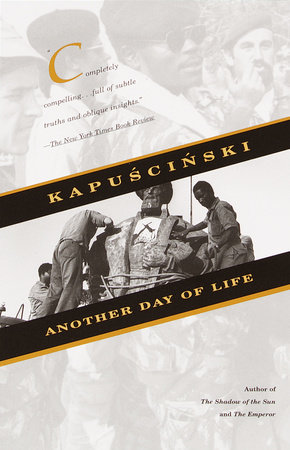
Another Day of Life

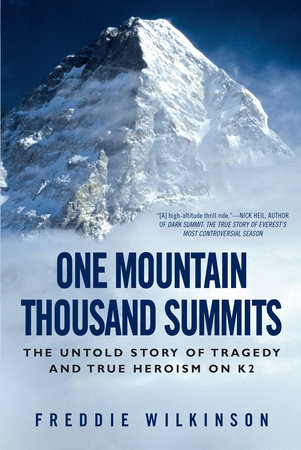
One Mountain Thousand Summits

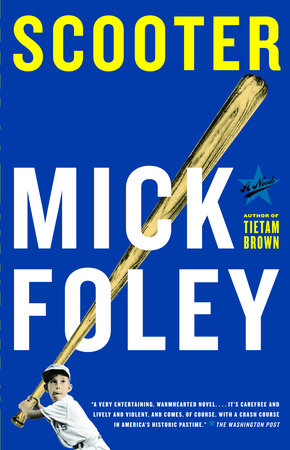
Scooter

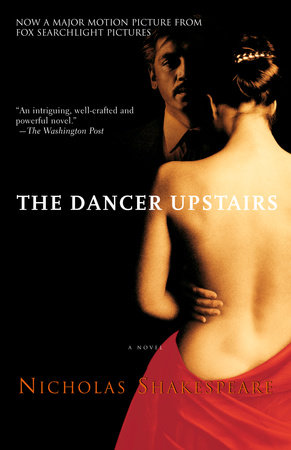
The Dancer Upstairs

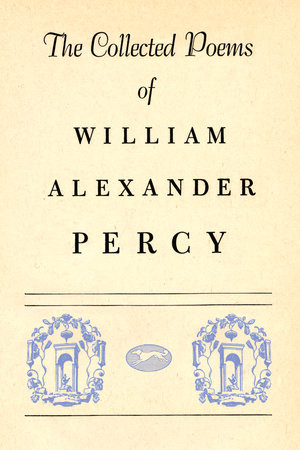
Collected Poems of William Alexander Percy

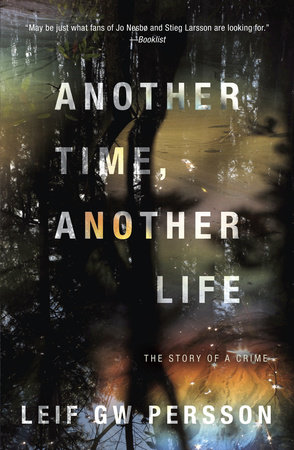
Another Time, Another Life

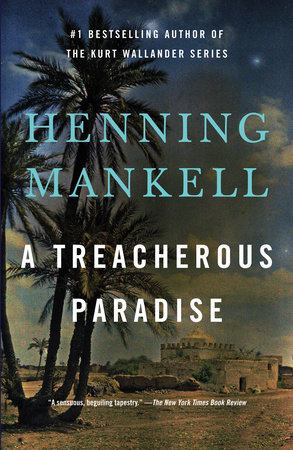
A Treacherous Paradise

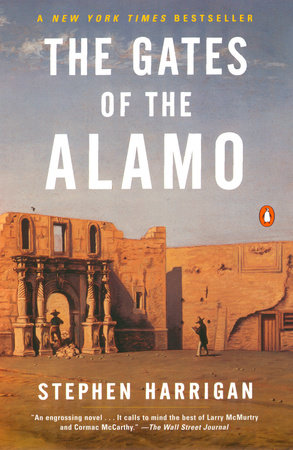
The Gates of the Alamo

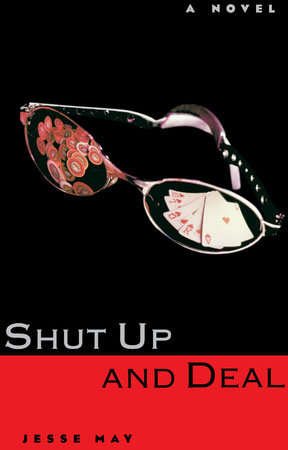
Shut Up and Deal

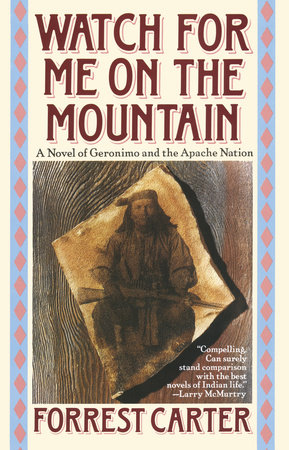
Watch for Me on the Mountain
Praise
“Brilliant . . . Sunnyside offers a wealth of wit and pathos and insight, and who better to guide us through this transformational moment in history than the Little Tramp? . . . Gold’s dexterous voice can swing from the exuberant melodrama of silent film to the terror of doomed soldiers to the quiet despair of the world’s most beloved man.” —Washington Post
“Sunnyside always intrigues and often soars . . . [It has] wonderful Dickensian qualities, namely, the capacity to startle, to thrill, to evoke laughter and, ultimately, to bring tears to the eyes.” —Los Angeles Times Book Review
“Ingenious. . . . A thoughtful commentary on the creation of celebrity in modern America.” —The New Yorker
“Glen David Gold’s Doctorow-esque Sunnyside brings young America to vivid life as he weaves together European battlefields and the backlots of Hollywood . . . Gold is a masterful, even heart-stopping storyteller.” —Entertainment Weekly
“An insanely ambitious novel . . . Gold’s prose is both decorative and tensile, like art deco steel turned into English language . . . [One] scene is such a gorgeous evocation of movieland glamour, night air and heartache that it calls to mind the finest of Hollywood novels, F. Scott Fitzgerald’s The Last Tycoon.” —Aravind Adiga, Financial Times
“A rich concoction of a novel, a melange of historical fact, biographical speculation and outright fantasy . . . Sunnyside pops and crackles with cleverness.” —San Francisco Chronicle
“Sunnyside moves in grand arcs. . . . Like all the best historical novels, this one is as much about the present as anything else.” —ComicCritique.com
“Gold’s Chaplin will fascinate readers for any number of reasons. . . . With protean, smart, and appropriately Chaplinesque writing.” —The New York Times Book Review
“Unflaggingly entertaining . . . Sunnyside flaunts a dizzying ambition. . . . Gold is a prodigally gifted storyteller.” —Newsweek
“Sunnyside is the best kind of summer reading, a beautifully lavish, intelligent novel that begs to be read slowly and closely, from first line to last. . . . Warmhearted and enveloping.” —Portland Mercury
“Sunnyside is a big book crammed with big ideas and ambitions, and, with its multiple plots and mix of history and fiction, it’s easy to see why many reviews have compared it to the work of E.L. Doctorow . . . [It’s] full of intelligence, ambition, and generosity.” —Christian Science Monitor
“A historical novel full of comedic pleasures. . . . [It] has a rampant sense of fun.” —Arizona Republic
“Witty and often as funny as it is insightful. . . . Sunnyside plays out much like Chaplin’s career, initially funny but moving on to something that is deeper, that plumbs the human condition without necessarily providing definitive answers . . . Grandly imagined.” —Denver Post
“A gloriously enjoyable read, with pleasures on almost every page: a novel of which Chaplin, the supreme entertainer, would have been proud.” —Daily Telegraph (London)
“Sunnyside is a cane-twirling, bowler-doffing triumph.” —Independent on Sunday (London)
“Sunnyside is a riot, as Gold displays a prodigious gift for storytelling, with a succession of scintillating set pieces and audacious one-liners . . . Fantastic.” —Time Out London
“A breathless stupendous novel that recreates both a young brash America on the verge of becoming itself, and Chaplin, one of its most bewitching quixotic citizens. From lighthouse to Hollywood to starlets to war to stardom to madness to genius Gold’s startling narrative carries us across the world and back. Gold proves himself yet again to be the hungriest craftiest funniest and most humane novelist we have.” —Junot Díaz
Author Q&A
Back Projection: Behind the Screens of Sunnyside
In the age of online celebrity/fan forums, DVD making-of extras, directors’ commentaries and pop-culture conventions, it seems more than ever that a work of art’s communication with its audience will always be two-way. But the impulse to pull back the curtain has been with us for as long as there have been stages or screens behind it. Having looked under the hood of the modern media machine’s first days and inside the minds of some of its major figures, Glen David Gold sat down to converse with writer and cultural critic Adam McGovern about Sunnyside’s own secrets—and showed that knowing some of the mysteries doesn’t take away the magic.
AM: We get to play long-form bookstore Q & A here. What’s the most revealing question I can start with?
GDG: Here’s a terrible secret that will get me blackballed—the most frightening question you can ask a writer is “What about this book makes you most insecure?”
I am more insecure about Sunnyside than Carter Beats the Devil. Sunnyside masquerades as a romp-with-detours, but behind the curtain are layers of complex, flickering ideas. Hence my slightly higher-than-normal speaking voice and my fumbling with my lucky necktie.
AM: Sunnyside imagines and reconstructs the thought patterns of a singular visionary, Charlie Chaplin. But sometimes an artist’s own inspirations and creative process are as elusive and indefinable to him or her as deciphering what another artist was going through. What do we know of the works of Glen David Gold?
GDG: I had a job in a bookstore when I was nineteen—this would be 1983—in which I learned about Don DeLillo. What I liked about End Zone and Ratner’s Star was that he pulled back a curtain on power and let us see what was going on in a place that normally would not want our company.
So Carter was inspired by seeing backstage at a magic show. An early cue for Sunnyside popped up on my first day working on Carter. I was reading a biography of Warren Harding that said, “of course he had to do something about all the Americans fighting in Russia,” and that was a big shock. What Americans in Russia? I had some hazy ideas about war being one of those places where seeing the secret seat of power would be interesting, but I had no experience of a world war in my lifetime. I wasn’t sure I could understand or express what that felt like.
I was also intrigued by something I ran across in the Oakland History Room, a bizarre little plan the mayor of Oakland had in 1924 to attract Hollywood talent. But unlike magic or war, there is no curtain to pull back in Hollywood. They say the most exciting day of your life is your first day on a film set. And the most boring day is your second day on a film set.
Still, there were numerous details that attracted me—I liked the early attempts to unionize that led to directors holding guns to their cameramen’s heads to get them to turn the cranks. And misbehavior off-set was always entertaining, but the heart of the process itself, unlike magic, isn’t about mystery—it’s about pretending mystery exists.
Carter Beats the Devil came directly from a magic poster I got on my birthday, which is admittedly a sort of weird present. The secret is I love stone lithography—Cheret, Cappiello, those weird anonymous vaudeville posters like “Blue Jeans” and “Child Slaves of New York”—because they were all gamed to provide an entire narrative in one image in order to sell you something—a product, a show, or a movie.
At some point I bought a one-sheet poster featuring Rin Tin Tin in a 1931 primitive talkie called The Lightning Warrior. The image was beautifully rendered and bizarre—a soldier lying on the ground with an arrow in his chest, a cloaked figure standing over him, and Rinty protecting the fallen hero with a paw on his sternum.
Rin Tin Tin looked remarkably like my dog Lilly. I’d never had a dog before and had this funny adult thing of falling in love with dogs, as if it was this big secret no one else had discovered, and I was curious what Rin Tin Tin was all about. I read the basic facts and then I worked Lee Duncan into the final pages of Carter, just as a placeholder, in case I pursued him further.
The Lightning Warrior is a sad film. Rinty’s star had fallen. Once, only a couple of years earlier, he’d been the savior of Warner Brothers and incredibly well-paid. But by 1931 he was reduced to working the serials. This was the equivalent of direct–to-DVD releases. He was about 13, and desperately tired. He could still run a little and growl at the villain. Most of the film involved the humans figuring out mysteries and Rin Tin Tin dozing by the fire until he was needed to bark.
But then I watched his first starring role, Where the North Begins from 1923, and it was night and day. He was spunky, attentive, emotive and athletic. There’s a scene where he has to jump into the second-story window of a barn that’s white-knuckle exciting. You see him sizing up the distance he’ll have to run, him failing to make the jump, falling, then going back and trying again—success! It’s amazing because you know there weren’t any special effects and when he fell two stories, he really fell two stories.
Later I discovered a film thought lost—Find Your Man—or at least 13 minutes of it that I handed over to film historian Kevin Brownlow for safekeeping.
AM: Can we duck down a mysterious sidestreet for a minute to learn the details of that real-life adventure?
GDG: Sure. I was on eBay and some guy had a can of 9.5 mm safety film for the Pathe Baby camera. It was in French and the titles called it “Redoutable Temoin,” which means something like “Fearsome Witness.” Starring Rin Tin Tin. It was missing the first reel, meaning the credits. I believe he had an image up of a title card indicating one of the characters was named Martin. Only one of Rinty’s silent films had a guy named Martin in it, and that was Find Your Man.
But it was possible, given it was in French, that they’d just used the name Martin haphazardly, meaning the guys in the office were tired that day and gave all the characters in this film the same names they’d given those in the last film. Who would ever know the difference in 1924?
I ended up winning it for less than a hundred bucks and then, because the world is strange, I won ANOTHER copy of it about a month later. I found an outfit in the U.K. that can transfer any format on the planet, no matter how obscure, onto DVD. Pathe 9.5? No problem. So I had 13 choppy, chunky, canine minutes of Find Your Man. There’s a great scene of Rinty escaping a kennel and another one of him going down a chimney that’s made hilarious by the glimpse—I’m guessing one frame—of Lee Duncan’s arm helping him scoot down a tight spot.
The best eBay find of all? When military units assembled in France, they sent around photographers with panorama cameras to take 40-inch photographs of all the officers and enlisted men. There are two such photos of the 135th—one is reproduced the size of a postcard in the Second Air Service book of 1919. It shows the men in front of two massive Liberty-engine DH-4s—and in the foreground, you can see there are two dogs. But they’re just smudges.
There’s a second photograph, and it popped up on eBay, too, the week I was finishing the book. It clearly shows Lee Duncan and a friend holding Rinty and Nannette in their laps. I have this one framed and over my desk.
In fact, those dogs were pretty crucial to me. I’ve referred in other interviews to being fascinated by the continuum between Houdini-as-famous-man and Chaplin-as-apotheosis-victim. But that’s just the intellectual side. The truth is, I think dogs are really cute.
My very first writing on Sunnyside consisted of Lee Duncan in France—the stuff in “Our Feature Presentation,” starting with him going into training, seducing the wrong woman, finding the puppies and Nannette dying. My idea was that I’d continue with his adventures in Hollywood. But when I got to the end of the “origin”—and this is the kind of thing it’s probably too revealing to admit—I realized the whole thing was badly written. The events were correct but the tone wasn’t. It was about 150 pages of someone trying to sound like me, circa Carter; attempted frolicking with history, but with muddy boots and no ear for the music. The word is “dutiful.”
When I put those 150 pages aside, I went back to see what was going on stateside during the war and that led me to Hollywood—the chicken-and-egg relationship of patriotism and war movies—and all roads in Hollywood led to Chaplin. And the famous photograph of Houdini and Chaplin hugging during the Liberty Loan Drive that made me sit up and say Hello. I didn’t know if he could be a main character or not—genius-as-protagonist seemed like a hard boulder to push up a hill—but after reading up on him long enough I felt I stood a shot at investing an idea of Chaplin with some breath.
Researching him began with reading David Robinson’s biography, and then Tramp, and Chaplin: His Life and Times and then the autobiography. I noticed that all of them were good but hampered. For instance: so much happened to Chaplin between 1916 and 1919 that biographers tended to follow things thematically rather than going slowly and seeing cause and effect. I noticed that going into that era, Chaplin is presented as a basically nice person, and coming out of it he’s increasingly not a guy you’d like to be trapped in an elevator with. So I made a day-by-day timeline based on the books, as well as old newspaper articles and Photoplay and whatnot. I was curious about the roots of that change.
AM: Was that, as Chaplin would say toward the end of your book, a change or a change back?
GDG: Definitely a change. The biographers were also hampered by not having grown up in Hollywood. I’ve overplayed my time growing up there—I lived in Hollywood but also the beach towns and San Francisco, and my relationship to the industry was tangential. But I’ve witnessed how reality warps like gravity when fame enters a room. It’s a damaging, dehumanizing, alienating thing, and Chaplin was one of the very first—along with Pickford—to whom that happened.
Also it seemed to be a given to biographers that Chaplin’s fixation on young girls was unfinished business with his girlfriend when he was 13, an unrequited love. That sounds fishy. I can’t think of many people whose unrequited loves at age 13 made them continue to seek out jailbait. It struck me as more part and parcel of who he was becoming.
So as I assembled that timeline and thought about encroaching fame, I saw big flashing lights in my rearview mirror: the war I’d been thinking about was a character in Chaplin’s life. Not just as I ended up describing it, but here’s a wild fact: that donation he makes to Eastman is the very first notation in his FBI file. He had a file before there was an FBI, actually, and the earliest snooping they did on him was when he went to a rally to get the troops out of Archangel. So this got my courage up.
As I learned about the intersection of Hollywood and ambition and war I felt I had my storyline, much more so than if I was trying to do a romp about Rin Tin Tin.
AM: Carter takes place a decade after Sunnyside, yet it still feels like it comes first. Are we best understood only with decades to look back on what we did? Or, conversely, can we only figure out why we’re the way we are now by looking back on how we got that way?
GDG: I like the feeling of explaining something that was once familiar, now past. When I started Carter, it was 1995, which sounds like yesterday but you know what I taught myself? SHTML, which I’m betting the kids today would look at like FORTRAN. One day someone will write a historical novel about facebook and people will be amazed. “Really? That impressed people in 2010?”
Maybe what you’re sensing is that I couldn’t have written Sunnyside first. It’s a darker book, and I could only write Carter because I so enjoyed him as a protagonist. It was a challenge to write Chaplin because I knew I found him sympathetic, but I also knew I couldn’t whitewash him.
There’s a similarity, structurally, in that I sneaked up on both books’ main characters in the opening pages—Carter through news reports and Chaplin through all those other people’s perceptions. I didn’t know I’d actually spend time reporting Chaplin stream-of-consciousness. That was a surprise and something I don’t think I could have done before writing Carter.
But, no, I don’t think we can figure out who we are by seeing who I think we were. That’s a closed system, right? I pick the details to build a case and I live right here, in the present. The details are always going to be what bothers me, the loose teeth and mismatched plaids of history.
AM: Sunnyside has several layers of story that revolve around each other and intersect at unexpected points—do the storylines come to you separately, to be put in alternating sequence after the fact, or do they rotate in your head as you write?
GDG: They all came out at once, barking for attention like baby seals. When I was writing Münsterberg, I had long riffs in notebooks that I copied out, more or less anything he said that I liked, and then things I wish he’d said, and then, when I’d done a few drafts of the book, things he should have said that might just apply to a certain big book of narrative fiction. This is something I left out. Imagine this is Münsterberg:
The brain, mighty Hephaestus, forges connections between disparate objects to find, thusly, narrative—not just object A next to object B, but the meaning of their interspace, which forms an intangible, C. When two separate viewers agree on the existence and form of C, the resulting tension is a kind of alchemy. For the audience, by agreeing to proceed, becomes the very author of the work.
Any work can juxtapose two objects, and an audience will work to see their relationships. The unexpected genius of film is the introduction of a third: here is a cabin full of settlers, here are some Indians crouched behind a log, here—now what is this?—is the cavalry on horseback—there is no real link among these three different images except the agreement that a narrative is proceeding, which is an agreement among civilized men that there is meaning in the world, not just chaos.
That’s a direct call upon the reader to understand that Sunnyside isn’t going to end like Carter did, with a narrative sweep that wraps everything up neatly. But it felt like a special pleading, so I cut it. I felt the book should probably either make sense or seem like a complete freaking mess depending on readers’ reaction to the minister’s words at the end of the book: are there constellations or only chaos?
I knew the three stories in “Our Feature Presentation” commented on each other but organizing them was a mystery. Do you shift scenes in 30-page chunks so a reader has time to get rapt within a story before moving? Or do you switch every 10 pages so that things move more quickly? I had to trust in the reader to do what viewers of movies do, and participate, to bridge the narrative.
Before I learned that trust, though, I had early “let’s end it with a big dance contest” ideas: Duncan takes Rinty and Nannette to Russia. And the soldier Chaplin sees in San Francisco, the one who gets the Shoulder Arms wheels turning, is actually Hugo. The boat that takes Ironside from Russia also picks up Duncan, and there’s a Chaplin impersonation contest on board. Hijinx ensue. But the book resisted those conceits. I was writing about chaos, and attempts to impose an artificial narrative order on such things are cheap and kind of contrary to the point I was making.
I think some people are fond of Carter because it’s a romance and it’s quite fun to project yourself into his world and wish you were there. There’s a bit of that in Sunnyside, but not much. I should say here—and this is the root of my insecurities, really—that some readers don’t like the Russia scenes, suggesting they don’t line up with the rest of the book. But perhaps, given the setting (Russia, winter, a war we lose) and the protagonist (someone pathetic, carved so that his life—if art did not exist—would disappear), they do fit, but you might not like how. To be overt, Hugo’s mission in Archangel begins just after the film leader counts down in the White House basement. In other words, it’s the movie America is projecting upon the world. Maybe reading about Russia is a letdown, but maybe it’s also like a strong peasant tea, all bark and bitter leaves—no fame, no sex, no glamour—but good for the soul.
A clue, by the way, to where some of this comes from: Aarne is named after the Aarne-Thompson tale type index. I was interested in having an American get swallowed by fairytale motifs that are exactly the same things that fuel silent film melodrama and fantasy—archetypes and quests and courtship, for instance. Film’s way of juxtaposing things changed everything we knew about narrative; I hoped to show that happening when we left Hugo in the snow, murdered.
AM: Narrative is the blend of possibly unrelated images in the audience’s head. But what about seemingly unconnected inspirations that enter the writer’s head?
GDG: I have an unrequited crush on music. I might love it more than I love literature, in part because I get to participate in it. When I read, I’m always taking the story apart and figuring out how things work, even when I’m being swept away. With music, I listen and I have no idea how chords work, and I don’t want to know.
I’ve resisted mentioning this in previous interviews because writing about music is like trying to explain my dreams. When I teach I suggest that students not use song lyrics unless they have a note from their doctor. It’s like drugs—the attraction is vast, it feels good, and everyone else thinks you’re an idiot for doing it. Music has a wonderful, unfair short circuit to the brain. I was talking to a musician friend about this: if I’m lucky I can set up a mood in a paragraph or two. Any joker with a guitar can hit three chords and within the space of a second yank the audience by the hypothalamus, just bypass the thinking sections of the brain altogether, and have them feel melancholy or excited or desperate or like dancing. I’m jealous. No one will ever fuck to Carter Beats the Devil. (Actually, if you have, I’m pleased to have been proven wrong.)
That said, Carter of course had Annabelle, the piano prodigy, playing Liszt—one of the more meaningful songs in my life, but I didn’t have to explain it. I just gave it a romantic context and a description—it sounded like the music you’d listen to by the shore of a lake, looking for comets at night—and that was fine enough.
After having watched enough of Rinty’s stunts, I started daydreaming a short script for him, based on a piece of music I couldn’t get out of my head. This happens frequently, usually with pop music, but sometimes classical or jazz. I write my own videos, highly narrative in structure, that forward storylines. No one has ever produced one—they’re just about making things with no outlet or showcase, really.
But I was listening to “Hoedown” from Rodeo by Aaron Copland, and I saw, as if I weren’t creating it, but as if I were seeing it on a screen, a three-minute sixteen-second story beginning with Rinty chasing off silver-mine thieves, rescuing his master from a burning barn, riding after them on horseback, causing cattle to stampede across railroad tracks, blowing up a train, rescuing a woman about to go over a waterfall, and finally fetching a stick of dynamite and blowing up the villain. All that was based on things the dog could actually do, much like Carter’s illusions were based on the best-case scenarios of actual tricks of the 1920s. It gave me a sense of his character and where he might go after the book was over.
AM: Reading that description—other than hoping there’ll be a Sunnyside film just so this can be in the outtakes on the DVD—it occurs to me that one reason it would be an outtake is that it portrays Rinty at the height of his triumph. Pretty consistently in Sunnyside we see protagonists off to one, yes, side of their heyday. Are people most themselves when everything’s not going right?
GDG: You’re right. To quote Jenny Lewis, “it’s a sin when success complains.” Oh, and “no one wants to pay to see your happiness.” When things are going well, and peaking, there’s no real conflict. The struggle to get ahead, to be heard, is inherently more interesting than what happens when the audience is already there. Hunger is narrative.
AM: You read up on your subjects and at some point you see the personality take shape out of history’s shadows and informed imagination guides you in filling the gaps. How much conjecture is too much, and how much is just enough?
GDG: I’m pretty good at giving birthday presents. If you know a person pretty well but you’ve never discussed what music she likes, but you make the guess, “I bet she’d like Stacey Kent” and you’re right—you might have what it takes to extrapolate character traits enough to write historical fiction.
I’ve been pleased that people who know the histories of the real-life characters involved in Sunnyside feel I was true to their spirits (though Cari Beauchamp suspects Frances Marion would never flirt with anyone under 5’ 10” tall). I think that to be—weirdly—a good sign that the fiction is working. It means that regardless of the truth, the wheels of the story are turning. No one (for instance) has busted me for turning Adolf Zukor into Mr. Burns from The Simpsons. (Also no one has busted me for my little fancy of it being dark and snowy 22 hours a day in Russia in April, which I think means that “the idea” of a person or a place really is more important to us as a race than reality.)
One thing I’m helped by is that pretty much everyone is a shambling mass of contradictions. You have to really do something artificial, the Myers-Briggs equivalent of giving a guy organic webshooters, to make people feel like you’ve lost the character.
AM: A series of characters in Sunnyside either get permanently enchanted by film’s possibilities or disillusioned by its limitations and surface allure. Does skepticism have to be the enemy of wonder? Or is there a healthy difference between agreeing to let your imagination be stretched and mere willingness to be fooled?
GDG: I recently saw The Habit of Art, a play by Alan Bennett about Auden and Benjamin Britten in 1972 or so. When I was leaving the theatre, one of the audience said, with disappointment, “You know, that didn’t really happen. They never talked then.” For some people, assuming that it’s real is crucial. If I’d been part of his conversation, I might have asked him if it was okay that Bennett had made up dialogue for them, or if that was also a problem. Or if the study on stage were completely made up—the pile of newspapers that was almost a character in itself, what if that were a conceit? Would that be upsetting? Probably not. I’m not being facetious; it’s that there’s a slippery slope for people about how much invention they’re willing to take. I happen to be at the very end of that bell curve. Give me the novel where Einstein and Stalin (“Enemies by birth! Allies by destiny!”) team up to save a young Elvis Aaron Presley and the future of rock ’n’ roll.
I’m hobbled by being gullible. I’m a patsy, and people tell me lies all the time and I believe them. Which makes writing for people who are skeptical a challenge that I’m not always so good at understanding.
When my first book came out, I learned that people read very differently from each other. Some people are concerned, deeply, with what actually happened. Maybe those are the same people who ask first-time novelists if their work is autobiographical. Other people probably are satisfied that if it says “a novel” on the cover that the contents inside are fictional and they don’t worry about it.
Some people read history because they’re excited to tell me what they think they know. That’s readership as a competitive sport. I’m here to admit: you win. You know more than I do. Which is another reason I write fiction: assuming new details is a way to claim ownership of the story.
AM: It’s the writer’s province to play with tense—with the right intuition you can go from “what was” to what a given personality “would have done.” Is that enough for a reader to expect from you?
GDG: I never feel like I’m writing historical fiction. Which is a cheap thing to say, isn’t it? My friend Jason Roberts rightly made fun of me: “Well, my story is set in the future and it involves rayguns but I resent you calling it science fiction.” Touché.
I feel like along with the normal features fiction writers manipulate—character and place and setting—I also use history as an axis to hang fiction on. You know how people speak of Faulkner being so true to the South? Have you ever been to Yoknapatawpha County? No, you haven’t. But he makes you feel like you’ve been there. That’s how I feel about 1919. It’s as real as, say, Albany is for people who read William Kennedy. These writers are true to the spirit of the place—we think. Even if the place doesn’t exist.
So, like them, maybe I’m a regionalist, only my region is time.
There was a scene I never wrote—it only got as far as notes—in which it’s 1916 and Zukor is watching the footage of a film showing a Roman siege. He’s watching it with a historian from whom he’s hoping to get one of those testimonials that the film is educational and thus morally worthy. But the historian can’t get past the type of canteen they’re carrying—it wasn’t invented until a thousand years later. Zukor argues with him that it’s the spirit of the thing that matters, the audience won’t care, and it gets more heated until finally Zukor says “then what about how half the soldiers are wearing wristwatches?” Which the historian hadn’t noticed.
I never wrote it for a few reasons, one of which was that it was my own entry in reading-as-competitive-sport, since wristwatches didn’t exist in 1916. It was an in-joke that was only going to read like Punk’d.
A few months ago I got a wonderful email from a self-described drunk librarian who said that she was taken out of the narrative by Chaplin studying the word “meme.” Since the word didn’t exist until 1976. I replied that I knew this and was interested in how perhaps the spread of information worked like a tachyon, and even went backwards when it came to fiction. She didn’t get back to me. I hope she knows I wasn’t making fun of her—she’d actually gotten to the heart of how stuff in this narrative works.
AM: There do seem to be threads that reach through time in both directions; we can make out more of the roots in the past the more we see of what grows into the future. A few of these threads seem to meet up in your books. Is this consciously pursued or are these associations more intuitive, and you’re fully aware of them closer to the end of writing than the beginning?
GDG: Intuitive and accidental. Nothing will more effectively make your book look dated than the desire to comment on current times. If I were trying to reflect my age, Carter would have just been, what, a scathing indictment of the second Clinton administration? I can’t think of a historical era that doesn’t reflect on contemporary times—regardless of when those times are. Twain did it in A Connecticut Yankee and The Prince and the Pauper. I hope my books always seem to feel relevant. Perhaps they will until we reach some era in which people are no longer looking for an angle.
AM: Sunnyside’s historical hall-of-mirrors includes not just real-life figures fleshed out into major characters and invented ones that are just as vivid, but one particular pair of players—Lee Duncan and Hugo Black—who seem to trade places among those two states. Lee was a real person most people haven’t heard of and may assume you created, while Hugo is an entirely made-up character who shares a name with a famous figure some readers may mistake him for. Are these just red herrings for the enjoyment of the alert reader and the playful author, or is there a deeper mystery of chance and shades of reality going on?
GDG: Occasionally I would read a review of Carter which began “Charles Carter, who died in 1936…” and I’d just bury my head in my hands. Like: Dude! Way to kill the suspense of a novel by leaning on the net! When I knew Lee Duncan was going to be a protagonist I figured people would run to Wiki. So I threw a curveball and made him Lee Wheeler, whose path apparently goes nowhere. And since Lee and Hugo are flipsides of a certain coin, I thought it would be a good mousetrap to name Hugo after a Supreme Court justice. I liked imagining some readers deep in the Russian woods with Hugo wondering how on earth he was going to become Jefferson County Prosecuting Attorney.
AM: Funny that you had to restore Lee’s anonymity, making his Hero’s Journey even more roundabout than we realize. Is there a special place for the ordinary person you feel it’s important to preserve (or put back)?
GDG: Early in Carter, young James is reading a book called Famous Deeds by Famous Men, which isn’t nearly as interesting to either Carter child as that magic book they find later that tells them how to take power themselves. Maybe that makes sense, given what you’re asking.
Also, maybe there’s some parallel with an internal monologue in Sunnyside where Chaplin calls for examining the small moment. If you haven’t seen it, it’s worth watching A Woman of Paris, which is all about that. It’s a modern-feeling film that you feel could have been scripted by Ford Maddox Ford or Sherwood Anderson on a good day. There’s nothing melodramatic in it, for its time, just some failed lovers moving on with their lives. Chaplin fought internally with the ending, as he wanted the heroine to make some grand gesture after her affair—I think she was going to work at a leper colony in one version—before realizing that all she had to do was fade away. What makes a story isn’t the sweeping clashes of swords so much as those butterfinger moments where a valet can’t tell the world Chekhov is dead because he’ s too busy playing with a piece of cork.
AM: It’s a commonplace that fans of actors, singers, writers feel some kind of debt from the strangers they give their admiration to. Where does this need come from, and why is it stronger than simple, shared appreciation among people we actually know?
GDG: That is the 260,000-word question, isn’t it? Stripping it to terms of ego and id, the shout of “I am” is infantile and primal and I’m sure Darwin might find some natural selection in that leaders tend to be known to the entire tribe as charismatic. (The positive side is that we’re wired to recognize emotions in a face unknown to us, which suggests communion even with strangers.) We are social animals but as a nation, one of our earliest mottos—e pluribus unum—is actually a secret call to competition, isn’t it? Out of many, one, and that one should really be me.
AM: Even at the height of film’s spellbinding effect and celebrity’s mesmerizing hold, when the stars appear at the Liberty Loan rallies in the book and when the real-life journalistic record is consulted, it’s clear that these icons were appearing “as themselves” and at that point in history the line between actor and role was well understood and accepted. In the 2000s we seem to require our idols to be playing a role at all times, as if unreality has compounded even as we pry further into their private lives than was ever possible or even desired in Hollywood’s “golden age.” When did we switch to this requirement of full-time image—did we just get unaccustomed to entertainers being anything other than images, with the decline of live theatre and unmechanized performance? Or is there a more profound psychological shift at work?
GDG: I haven’t ever gotten to the bottom of this. The film magazines of the day were always on about how They were just like Us—starlets knitting for the war, leading men being nice to their mothers, etc. But readers were also aware this was hype (even if they didn’t have a word for it) and there was a cynicism in their response. They wanted to know the real behind-the-scenes truth. And when they got it (as during Chaplin’s second divorce, when his desire for oral sex was discussed on the covers of every paper), it was always shocking. So there was some doubt about whether the truth was actually the truth, too.
Do we require our idols to keep playing roles? I’m fascinated and exhausted by the rise of reality TV. Right now there are people on the covers of magazines whom I’ve never heard of (I got rid of my TV about two years ago) but whose fame is predicated on them being real people. They have no talents, no skills, no particular importance to the culture other than their “realness.” I would use a synonym for that but every one of them—veracity, verisimilitude, etc.—suggests a comparison between themselves and something that’s “true,” and I don’t know what that thing is. Maybe the weird accomplishment now is that we put people on TV who are so real they seem like people not on TV. Who knew how timid The Truman Show would be?
AM: Even though the archival record before the 20th century is lacking in accounts from non-famous people, today’s flood of personal information from 24-hour tweets and webcams can be just as meaningless in its endless bulk (not to mention its camouflaging self-consciousness). Is paring things back down, in addition to uncovering some other things, where writers come in?
GDG: A couple of weeks before Sunnyside came out, I was looking myself up on the net, something I’d stopped doing about five years ago—I even wrote an essay about that for Bookmark Now. And I found that a critic was tweeting about the experience of reading the book. No matter how much I furrowed my brow and squinted at Twitter, I couldn’t figure out if what he was saying was positive or negative. It drove me crazy. Then my wife said, “You took eight years to write a 260,000-word novel and you’re looking at a site with 140-character comments? Why exactly is that?”
Uh…good point. Sunnyside is the anti-Twitter.
Tangentially, I’m concerned with something that is talked about a little, but not nearly enough: internet addiction. It’s insidious, especially for writers. I think the pleasures of information and communication and instantaneous feedback are so overwhelming that the tradeoff—the ruined attention span—is very hard to admit to. I know I have that problem, and the more writers I meet the more I think that we have rewired our neural pathways so that there’s more and more white noise in there. I’m testing this out—I killed my eBay searches and my liberal blog bookmarks. With any luck, by the time this sees print I’ll have made some progress back to a more paper-friendly life.
AM: Is the problem inattention, or excess scrutiny? The paper-friendly life has to be finite in ways that online media don’t—a book ends while scrolling and clicking can be boundless. Is the strength of prose really that it gives you more to pay attention to or that its limits force you to spend the right time on the right things?
GDG: Reading a book is about doing one thing at a time without diversions. Online is not. Think of it as the difference between going out on a date versus showing up at a strip club with a fistful of five-dollar bills. The latter might seem more stimulating at first but you’ll wake up in the morning sated, poorer, hungover and perhaps with a disease. If you’d gone on the date, maybe you’d end up married instead. What was the question?
AM: In Carter, a subtext of sleight-of-hand persists throughout the book. At one point he and a lover walk through an early-20th century San Francisco that we think of as classic, but which he notes is all a re-creation from buildings wiped out by the earthquake some years before. And of course the person Carter has been replaced with the story of “Carter.” In Sunnyside too, we see settings that now exist only on film and give the feeling of fading just as readily, and we are only left with the speculative story of people who were well-known at the time. What of human accomplishment is truly enduring?
GDG: There’s a wonderful series of books by John Bengstrom in which he locates every exterior shot by Keaton, Chaplin and Harold Lloyd. He uses contemporary maps and photographs to show what the place looked like at the time, how it looked for the movie, and how it looks now. His points are about geographic displacement in the midst of historiography: you’re on the corner of a street in Gower Gulch, but more people remember it as where the Little Tramp was chased by a cop. Which was probably dressed up then as a fictive bit of memoir so that it looked like the Lambeth section of London. Architectural layering, which occurs in San Francisco after earthquakes and Los Angeles whenever there’s enough money around to suggest that spending it is a favor to the environment, also has a meta-memorial flavor to it: they build places to remind you of another place so that, years later, when someone is watching a film, it will remind them of yet another place.
I think that all is vanity, but I feel that the pebble we drop down that canyon is art. Your achievement, should it survive whatever physical horror is coming next, is subject to interpretation and revision by the next generation. But if they’re still finding communion with it, then good for you, you did it, you’re dead but your ars is longa.
Broad appeal does in fact make me happy. I like doing readings, I enjoy it when people kick around the ideas in my books, and I’m sad when I feel ignored. Unfortunately, courting attention is antithetical to the mind you have to be in when you’re making stuff up. That’s one of the pitfalls Chaplin falls into—when he starts listening, even a little, to The New Republic, and its siren call of belonging to the canon.
Approaching that trap on purpose is what my wife calls The Immortality Sweepstakes. As if you can through sheer willpower get your place in the pantheon dusted off and ready for you.
AM: You successfully conjure in black-and-white words the free-associative runs and intuitive trance of creativity, in Chaplin’s ongoing inner monologue of trial-and-error ideas. What kind of state of mind do you yourself have to get into to access that?
GDG: Luckily I could take eight years to think about what might have been going through Chaplin’s mind over the course of a few months here and there. Also, I had the fruits of his labor at hand and I could try to reverse-engineer a thought process. It just meant that any other tributary I followed might sound goofy and fun. Why not cast Shoulder Arms with dogs? Also, it’s probably the nature of a neurotic creator to doubt whatever he’s doing, so him throwing buckets of cold water over both his good and bad ideas seems realistic to me.
It was helpful to watch his movies a few dozen times, as there are bits (factions, to use his odd word) that are terrible or only adequate, but forgivable for the moments of genius. It made me suspect that there were times where he thought, “Okay, good enough,” and then had to move on. Or, like the employment office scene in A Dog’s Life—it has nothing to do with anything in the rest of the film, but it added five minutes to the reel, so, whew, keep it.
What I didn’t want to do was have him take something from real life and then turn it into a movie. When writing about him being lost in Sunnyside the film, the battle was not falling to pathetic fallacy and becoming lost myself. So even though he seems lost, I gave him enough spare parts that he could have engineered a way out—if he’d just done what he tells Max Eastman, he would have made an insanely revolutionary film, but he has a failure of confidence. How cool would a 1919 film about the Tramp leading farmhands to a workers’ paradise have been?
AM: You seem to portray creativity as being a kind of truce with madness. Carter is melancholic, an outcast, yet he literally makes magic. And your Chaplin acknowledges his mentally-ill mom as a source of the unusual way he thinks. Is art a delusion?
GDG: A definition of sanity is the ability to take someone else’s point of view. Maybe creativity is madness plus superego. The superego has to be directed toward understanding that separate, second point of view. I’m aware of how tenuous that balance between madness and creativity is when I’m drifting off to sleep and I pop awake with an idea that I write down that turns out to be “corn chips are shaped like a dog’s head” or something. That could be genius or it could be insane, depending on whether you have the right context.
But about outcasts—one thing I remember, especially at writers’ conferences, especially by the fourth or fifth day when the hip-hop music is playing and the booze is flowing, and everyone mistakes themselves for being attractive, is that none of us was ever asked to dance in high school. You need that window to stand behind, nose fogging up the glass, while on the other side a society in which you can’t participate is having an easy, simple, good time. More artists than babies are made the night of prom.
AM: Late in Sunnyside, Rebecca makes a discovery that transports her literally out of her own life, in the novel’s seemingly most certain nod to the supernatural. Ever since movies began, we all sometimes think we see celebrities on the street, as if illusion and reality freely switch places. But Rebecca’s experience is more literal (if it can be believed).
GDG: I had written the mirroring scenes of Hugo with the Princesses and Chaplin dancing with his nymphs, and had tackled the history of narrative—fairytales colliding with the newest methods of storytelling—and it occurred to me as the novel was winding down that I had accounted for one moment of magical realism, but that I’d never reflected on it. The only reason we knew about Chaplin’s multiple appearances was his fame. If it had just been Some Guy, there would have been no way of accumulating sightings.
Also, and this was so obvious that I didn’t even mention it in the book: Chaplin really was everywhere in a way. When I tried to describe the events of November 12 to people before they read the chapter, a few of them said, “Wait, Chaplin was on 800 movie screens? And?”
Rebecca came to me full-blown. I knew almost immediately I could take her anywhere, and I wanted her to be the first agent in Hollywood. But that wasn’t going to be enough. I started thinking of Hebrew mythology, dybbuks and ibburim, in that she was a fully formed soul who just appeared in the book, much as Ledocq did in Carter. So I thought she might be a narrative experiment—if one of my arguments is that our investment in narrative is what saves us from the darkness of the universe, and if I’ve already opened the doorway to such things with Münsterberg’s theories, then I would try to have the courage to turn Rebecca loose. And yes, it’s also a comment on Carter’s last trick, “Everywhere.” And that’s just the surface—there’s more to the decision to have her appear as she does, but I figure readers might be pleased to puzzle that out. I don’t know if all that works or not but I was happy to have her show up in all three stories as a persona ex machina. I still feel like I shortchanged her a little. Maybe she’ll be back to even the score.
AM: This may either force you to play favorites with your imaginary children or give too much away about what “morals” even you feel are to be drawn from a story about a random universe, but is there a character you like best?
GDG: That’s easy: the women. Emily Wheeler, Rebecca, Frances, Hannah, Mary Pickford, the Princesses—hey, Tatiana the Witch—who doesn’t even appear in the book anymore—was a good one, too.
I probably took the most care with Hannah. I didn’t want to make her a generic crazy woman or at all threatening. Chaplin’s decision to put her on the trolley had to seem inevitable but also his list of complaints had to feel on some level suspect and empty. I love that the paperback has a trolley on the cover.
AM: The women are the most brave, centered, resourceful and sympathetic characters in both books (with plenty imperfections, but understandable ones). You may have hinted at this in the last comment about Rebecca, but can you see a woman being the protagonist of one of your future books? The women are in many ways the most important characters in Carter and Sunnyside but most readers would say the “main” characters are Carter, Chaplin, Hugo and Lee. In a man’s world survival strategies are not a conscious concern for the guys and not optional for the women. Is seeing how (if) the men figure life out more dramatically compelling, or is it just writing what you know?
GDG: I’ve been toying with having a woman as a protagonist in a future novel. Not the next one, which is going to be mercilessly short, but there’s a particular woman from history whose story is so rich—and her actions so interesting—that I’ve wondered if I’m good enough for her. Plus—and I’ve talked to you off-the-page about this—she’s hard not to have a crush on.
I haven’t done it yet in part because Ishmael Reed scared the hell out of me when I was 19. In writing class, he had us do a first-person opposite-sex story and the entire class, myself included, blew it. You have to be a good writer to pull off something better than literary transvestism. Perhaps it’s about finding what you identify with and starting there.
AM: One Easter egg that seems a cyanide pill is the phonetic closeness of Golod to Gold. Are there identifications you can talk about? Modern social media Rebecca couldn’t have foreseen allow people to disperse their presence and vary their identity in the way she dreams of. Is the writer a con-man or woman? Someone who hides behind other identities to deliver messages that seem like they’re coming from more than one person? A savior who can take many perspectives and appear wherever needed? All or none of the above?
GDG: “Golod” means “hungry” in Russian. Which I know because my family name in Russia was Golod. And I’d answer more of the question but it does start to hinge on giving too much of a road map to where the pot of golod is buried.
AM: The patterns of the book’s narrative mural are well-laid—Emily’s lighthouse lantern and the beam of a movie-projector, or flares over a battlefield, or the flicker of candles in an old castle, to name just one of the threads that runs through the book (and the mix of metaphors is something this epic can handle). Do such images come to you first, and the story accumulates around them, or do you start with a thematic outline and then the story finds its way to what fits in?
GDG: When I was investigating Chaplin’s multiverse of appearances, it made sense for him to somehow show up in black and white. So I thought a lighthouse’s spotlight would do the trick. The Fresnel lens suggested that there are so many objects we look through—from that lens to Rebecca’s spyglass to the sunglasses Hannah wears, and the giraffe’s spectacles that come off at the end—that perception itself wasn’t a bad theme to play with.
That said, it was never conscious—I didn’t have a shelf of objects at hand, but always when rewriting I would remember, “Oh yeah, sunglasses,” and make sure they fit.
AM: On one level this book seems to tap the timeless appeals of silent film—the escape of grand buffoonery, the pathos of a boy and his dogs—while maybe investing them with more genuine humanity than Hollywood could once provide or audiences could handle. An endorsement of classic storytelling methods that still have real life in them regardless of their bad reputation?
GDG: Sure. One of the first words I put on a bulletin board eight years ago was “melodrama.” That gets a bad name in that it implies unearned sentiment. But there’s a lot of risk involved. Wilton Barnhardt says fiction risks either unearned sentiment or irony. You’ll always be rewarded for irony. So I was curious about the other thing: can you really tie someone to railway tracks and keep the audience interested? Sure. It’s just about not winking but having compassion for the characters.
AM: You arrange your incidents and rotate perspectives to achieve an immersion in characters’ psyches and a 360-degree experience of grand themes and magic coincidences, but you do this without conspicuous “experimental” technique. Is this a stylistic credo, or just an instinct for using what draws more attention to the story than to itself?
GDG: Credo. My wife has a phrase, Big Boy Books. Those are the novels which get reviews like this: “This book is 300 pages too long, it’s artificial, it’s too clever, and the author has obviously never met a woman in his life, but you MUST read it because the writer is so goddamned smart.”
When I was interviewing Umberto Eco for the LA Public Library, I read a stack of his stuff and I was reminded, time and again, that he was smarter than I was, but he forgave me for it. Not in a condescending way, but he was interested in educating and prodding and asking questions. He’s secure, which is the opposite of where all those big boy books come from.
Generally speaking, I don’t want the writing to call attention to itself—I mean, sure, turns of phrase, or at the ends of scenes, or if a character says something funny, that I don’t mind attracting comment, as it’s about advancing the narrative, and the reader’s immersion in it. But being flashy is about insecurity, and, as I’ve mentioned, insecurity is already the hallmark of this book. My bumpersticker—can I have a bumpersticker?—is “don’t mistake clever for genius.”
AM: Chaplin’s job was to make people laugh, and this is an immensely funny book—from the rowdiness of frontier America to the outlandish scams of the Golods to the misadventures of Lee and of ill-fated military escapades. These smiles all have a bite—about mercenary excess, delusions of grandeur, imperial overreach and other human folly. But is there any trial too great not to keep a sense of humor about?
GDG: Humor is another aspect of fatalism. Freud mentions theories that laughter evolved from our shouts of triumph over our enemies when we’d slain them. The worse the adversity we face the greater the belly laugh.
So it’s perverse how belittled real humor is on the literary landscape. I wrote an essay for Black Clock about how humor is so suspect that the worst crime the “comic novel” can commit is to be funny. Much better the lapsed, raspy smile of knowing. I think humor is such a powerful force it has to be mistrusted. Like, oh, I don’t know, feminism.
Late in the last act, Pishkoff says the Devil gave man a sense of humor so he would laugh at his problems instead of trying to solve them. That’s a paraphrase of a Russian belief. The Russians have a terrific sense of humor, a direct result of suffering. In the ’80s, when I started to become aware of various conflagrations around the world, I realized that if there’s a fight between two forces unknown to you, the fastest way to tell who is in the right is which side has the better jokes.
I knew that the largest section of the book would involve Chaplin and two proxies, in the sense that Leland and Hugo would subdivide Chaplin’s comedic traits. Lee is the nurturing figure who is determined to succeed and to shelter someone (à la The Kid, City Lights or of course A Dog’s Life); Hugo is the pompous twit who gets rocks thrown at his head, and who is going to the fadeout as a tragedy—the drunk in 1 AM or the sophisticate in The Idle Class.
What I didn’t know was how many readers would hate on Hugo. And I think that’s—well, that’s either because I blew it as a storyteller, or because we’re going through a spell right now of not sympathizing with victims.
The only thing that would get me to turn those pages, as a reader, was humor. And the humor—I’m not sure what this does to Freud’s theory about laughter—but I hope it leads to empathy for Hugo in his terrible situation.
But sticking to humor as aggression: I’m eager for people to re-read the book and see what Hugo’s mom wishes for him when he’s a child.
AM: So many what-ifs and might-have-beens are brought to life in the book that it’s no surprise that there were many roads-not-taken in your writing of it. What were some others we haven’t discussed?
GDG: There’s an internet meme (hah!) about Sunnyside originally being twice as long. I turned in to Knopf a manuscript that was 1,280 pages—Courier New with huge margins. On my own I edited out about two hundred pages. My editors—Sonny Mehta and Diana Coglianese—carved another 150 or so out and asked for maybe 50 pages of new material. So what you’re reading is a 1,000-page manuscript turned by the geniuses of production into 665 pages.
Sonny suggested Dos Passos’ Manhattan Transfer as a model, and that was dead-on accurate. It shaped everything.
Actually, if you’re feeling intrepid, go to glendavidgold.blogspot.com and start at the first entry, August 11, 2007. That number at the top is how many manuscript pages I had in a row that day. For the first few months I just kept track of that number and then I started adding what it felt like to be working with the book. I wrote it for myself primarily, as a way to stay honest about the process. So it’s obscure. One entry has been quoted on other blogs, and it’s a good example of what I’m talking about:
How the drafting process works:
1 “He gave her a diamond”
2 “He gave her a 16-carat, swing-beveled, dazzling blue diamond whose bezels shone with grace, and he did so generously”
3 “He generously gave her a 16-carat, swing-beveled, dazzling blue diamond whose bezels shone with grace, and he did so generously and with much forethought.”
4 “He gave her a dazzling blue diamond.”
5 “He gave her the clap, generously and with much forethought.”
I’m somewhere between 3 and 4 right now.
What was pared away when I finished? Mostly re-emphasis on points already understood, tangents that didn’t go anywhere, and three things I rather miss. The first was a botched seduction by Lee Duncan of a lighthouse family girl in Crescent City that, true, didn’t add much.
The second was a recurring character named Tatiana the Witch, who keeps causing problems for Hugo and Ironside. Finally, Diana said, “yeah, she’s a great salute to Monty Python and the Holy Grail,” and that was the moment of Knopf editing genius—an aikido move, really—that got me to see her point and finally cut the bit. By some production error—mine—Tatiana ended up on the cast list in the hardcover, which speaks of her yearning to be free.
The last thing was the most difficult to lose: the concept of the benshi. When western films came to Japan, the editing techniques and stylized expressions of emotion made no sense to them. You see some people indoors in a cabin, you see bad guys outside with guns, you see a stampede… contrary to Münsterberg, the audience was bewildered and needed to have it all explained to them. So a benshi was a guy who stood beside the screen and told the story as it happened. Ironically, the best benshis didn’t always know what was going on, either, and tended to make up their own stories.
Then as a metaphor it was great to work with. Finally, on a plot level, benshis began to retire not with the advent of sound, but before that. You didn’t need a benshi with Charlie Chaplin films. He was that universal.
But: it was one layer too many. Sonny, after reading the seven-hundredth draft in which I kept it regardless of his advice, finally said “I sense the benshi…interests you,” and the perfect cadence of that beat, represented by the three dots, was enough for me to cut it.
AM: Sunnyside reclaims a long-ago era, but like any work of art it’s something of a compact with the future. You literally address that future in the end of your acknowledgements. What do you see for it and your work?
GDG: I’ve mentioned that I wrote four unpublished novels before Carter. The very first novel was inspired in part by a quotation from Thomas Jefferson’s Notes on the State of Virginia. “There is a wonder somewhere,” he writes, about some unexplained mysteries of nature. “He who believes nothing is less remote from the truth than he who believes what is wrong.” I was in no way equipped at the age of 22 to handle all the nuances of that, but when I wrote Carter I always had the first part of that quotation at hand—there is a wonder somewhere.
Sunnyside in a way is about wonder taking a blackjack to the knees. This is why the book winds down with the sermon that refers to Jefferson, particularly the second part of his quotation.
The very last lines of my book, my hope that you have polar bears in 100 years, is about death. I had hoped we would conquer some of the things I learned about in history class. Not only is that wrong, but all the problems we have today—most of them based on the seven deadly sins, plus stupidity (stupidity being such a sin they didn’t want to encourage anyone to embrace it by giving it a platform)—all those problems are going to outlive me.
People who think a lot about history helplessly make predictions—we like to think we know which way the story is going—and mine is that within my lifetime there will be ecological collapses so severe it will brutally restrict if not destroy our current state of society, possibly end 90 percent of life on earth.
So what’s the point of writing fiction?
You’d think that Sunnyside would be a massive answer to that—I do believe that making order of the chaos is the only way to turn back darkness—but it’s only so good for so long. Sometimes it just seems hopeless and, if I’m to be honest, that’s where I’m at 50 percent of the time.
What’s happening to me now, especially as I travel as a 46-year-old with no kids, is a deepening existential crisis that I’m unsure how to resolve. That’s usually the kind of thing that results in making fiction. In this case, however, I’m stumped for how to behave. I started referring to this on my blog in November 2007:
Two years ago, I lived in a small farm town near Santa Barbara. People there were highly attuned to the patterns of weather, which were always dramatic. One day in spring I was walking downtown and I looked in the sky and saw the clouds blowing from east to west. It was easy to tell east and west, as the valley ran that way. I wasn’t the only person noticing. People were stopped on the sidewalk and staring. The reason is that the clouds only blow west to east. The ocean is west, the wind always blows from there. Always. I mean: every day for the last four thousand years. You could have heard a pin drop.
Beginning that moment I got a knot in my stomach that has never gone away. We had no rain, then 11 inches one night. There was a four-day-long frost that killed everything. A 400-year-old oak tree toppled over. Most of the other oaks grew a mysterious fungus that killed them. At the market, all the farmers said they no longer knew what to plant—nothing made sense. I could feel the weather fighting with itself, blasts of hot air coming in where there should have only been cold.
I still feel this every single day. I write here about fractals and keyboards and accumulation and I am also battling with a fairly dark question. I can only not ask the question for a few hours at a time; I can’t actually lay it to rest.
It’s gotten worse since then. I was in Melbourne in August 2009, and the temperature was about 20 degrees warmer than it should be. There was no rain. It was blindingly sunny. And the response among most people was, “Isn’t this great?” After a week of this, I returned to San Francisco, where Coastal Oak death is still killing our old giants, where I wonder every day if the fog and wind and sunshine isn’t somehow different now. The fog, for instance, comes on warm days and seems thinner, less committed. It comes in the wrong month. It settles in the wrong valleys. It feels sickly and embarrassed.
I’m typing this at 5 AM in a hotel room in London in November 2009, and it’s too hot, again. There are clouds in the sky almost every day that people haven’t seen before. When I was greeted at the front desk, the clerk said, “it’s unseasonably warm,” and that was the first time I heard someone use the phrase in polite conversation to mean, “it’s the end of the fucking world—please have the decency to agree with me and the deeper decency not to say anything more.”
I keep hoping there’s some angle to this I’m not seeing correctly, and that my worries will seem quaint, like Y2K or the second coming or killer bees. I hope that there will be scientific breakthroughs on carbon emissions or weather control or artificial photosynthesis that will extend our time here, or that there’s some variable we just haven’t figured out yet that means we’re okay—but it’s not as if disaster is looming; it’s here already, and we don’t react to it because it’s happening in slow motion.
I’ve brought this up with people I respect and they agree it’s probably over for us—and good riddance. It’s that last part that depresses me, as it’s only taken 60 years for Faulkner’s Nobel Prize speech to seem anodyne; we really are just going to be clinging to the edge of a rock, naked and bloodied, all nobility removed in the desperation to pry open one last can of baked beans before the poisonous tide rises and drowns us.
Now: I believe all that and yet, here I am, writing. If I truly believed in hopelessness, if I understood the entirety of that concept, why would I even bother with writing? Unless it’s just a habit, like a slightly more complex mechanism than chewing gum, something I do because I do? Or like worrying rosary beads. If it’s a habit, then life is hopeless and meaningless and art is a tic.
We’re here because we’re here because we’re here because we’re here.
That was a real song the Allied troops sang in Russia. If you’ve gotten to the end of the book, and you’ve wondered about the Russia scenes, there’s the cue.
We write because we write because…
That possibility seems awful to me.
The very end of Sunnyside, the funeral for the Little Mouse, is real. Chaplin wrote a letter about opening the coffin and finding the smile fixed on the baby’s face. As soon as I read that, I understood that all the discussion of his having started The Kid after his child’s death was incomplete without seriously slowing down and paying attention to that image.
When I wrote the scene out, I felt a perfect emptiness, and I didn’t know it was the end of the book until I finished the scene. Then I realized it was a moment beyond which nothing else existed.
I don’t know how to take things further than that.
There is something that affirmed meaning—I could feel it—when I was typing out that scene. The attempt to describe hopelessness turns back hopelessness. I think. It’s a hunch, though, and it’s not yet tested. I don’t think I believe nothing. But I think I’m less remote from the truth than I used to be. For now, that has to be enough.
21 Books You’ve Been Meaning to Read
Visit other sites in the Penguin Random House Network
Just for joining you’ll get personalized recommendations on your dashboard daily and features only for members.
Find Out More Join Now Sign InAccount Overview Recommendations Orders Account Details Email Preferences Bookshelf






